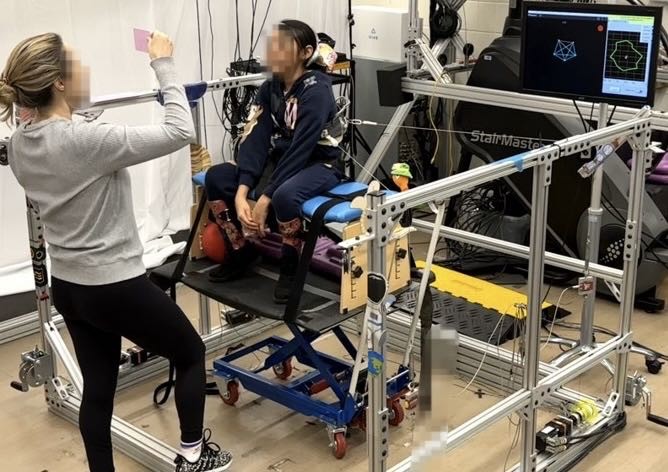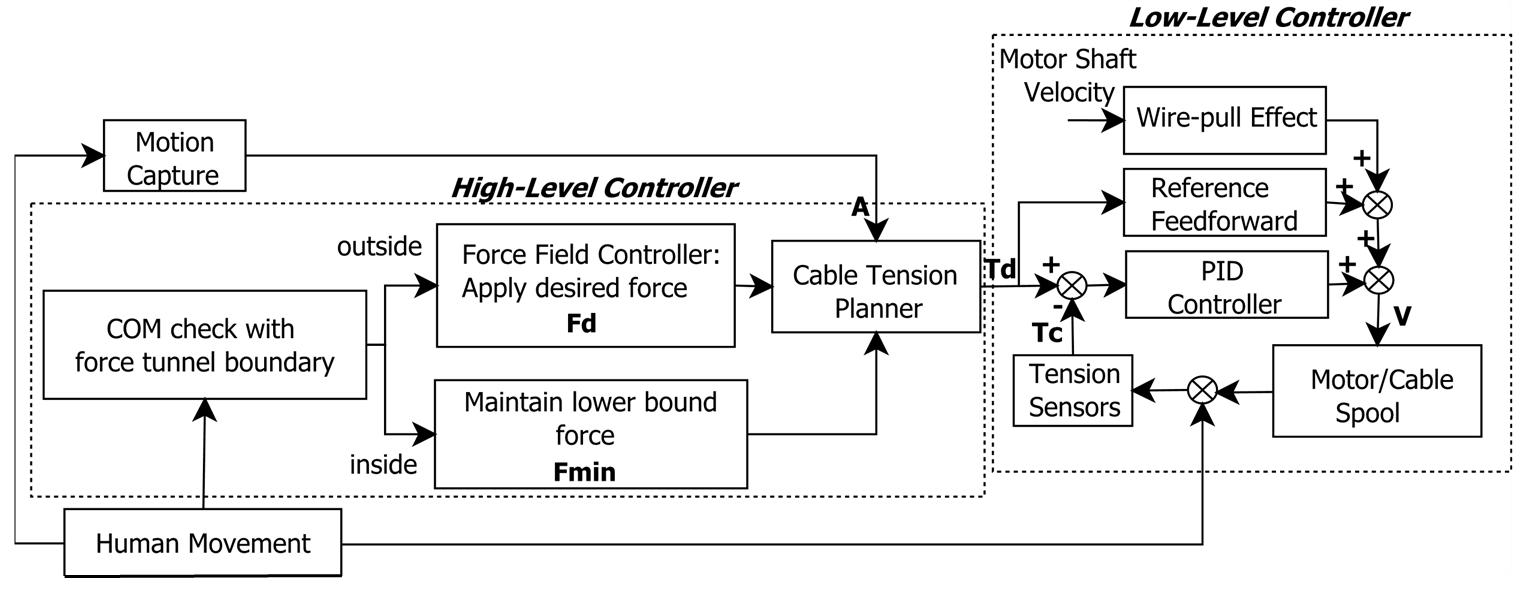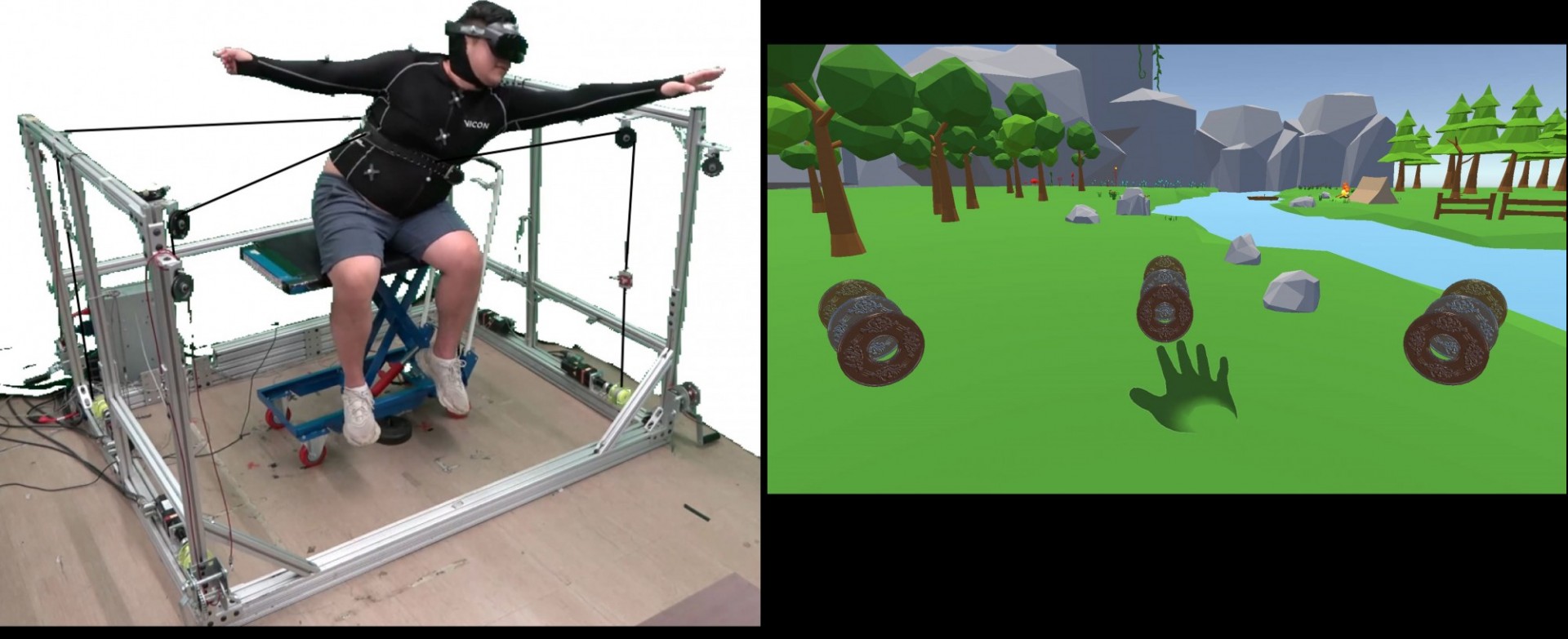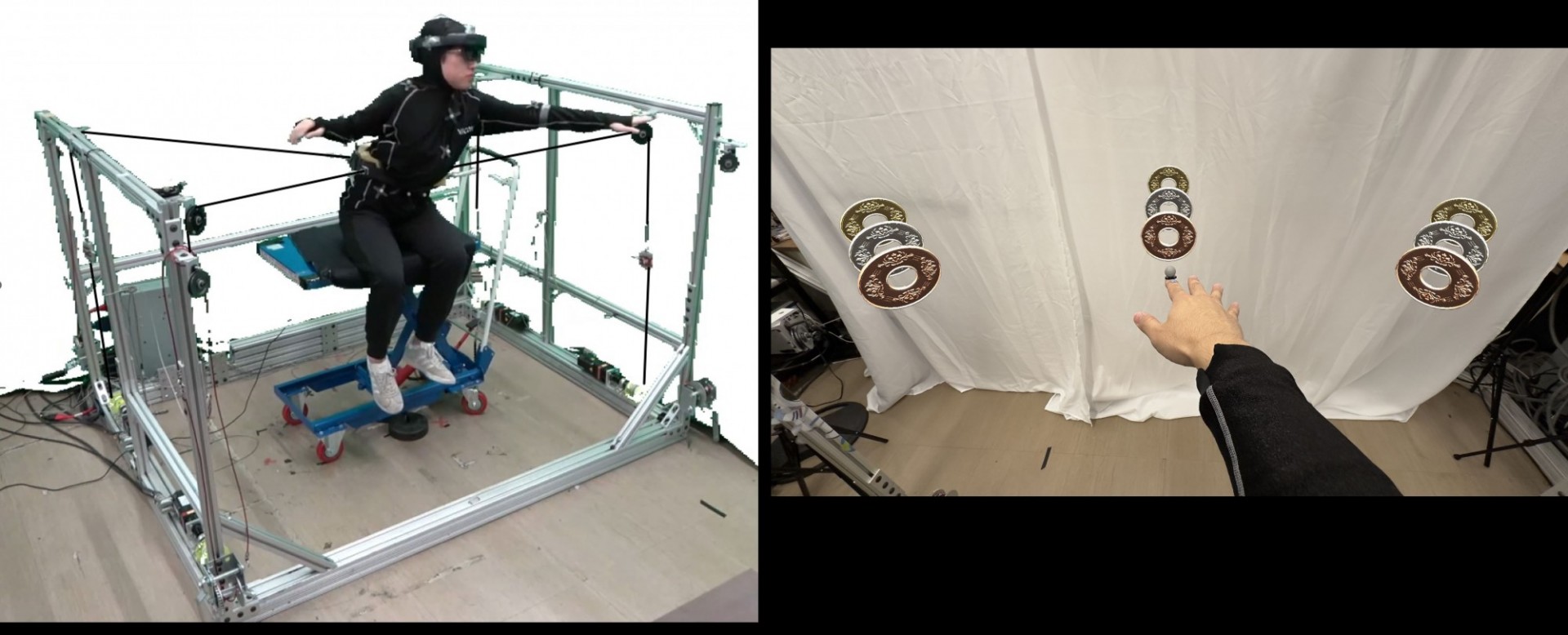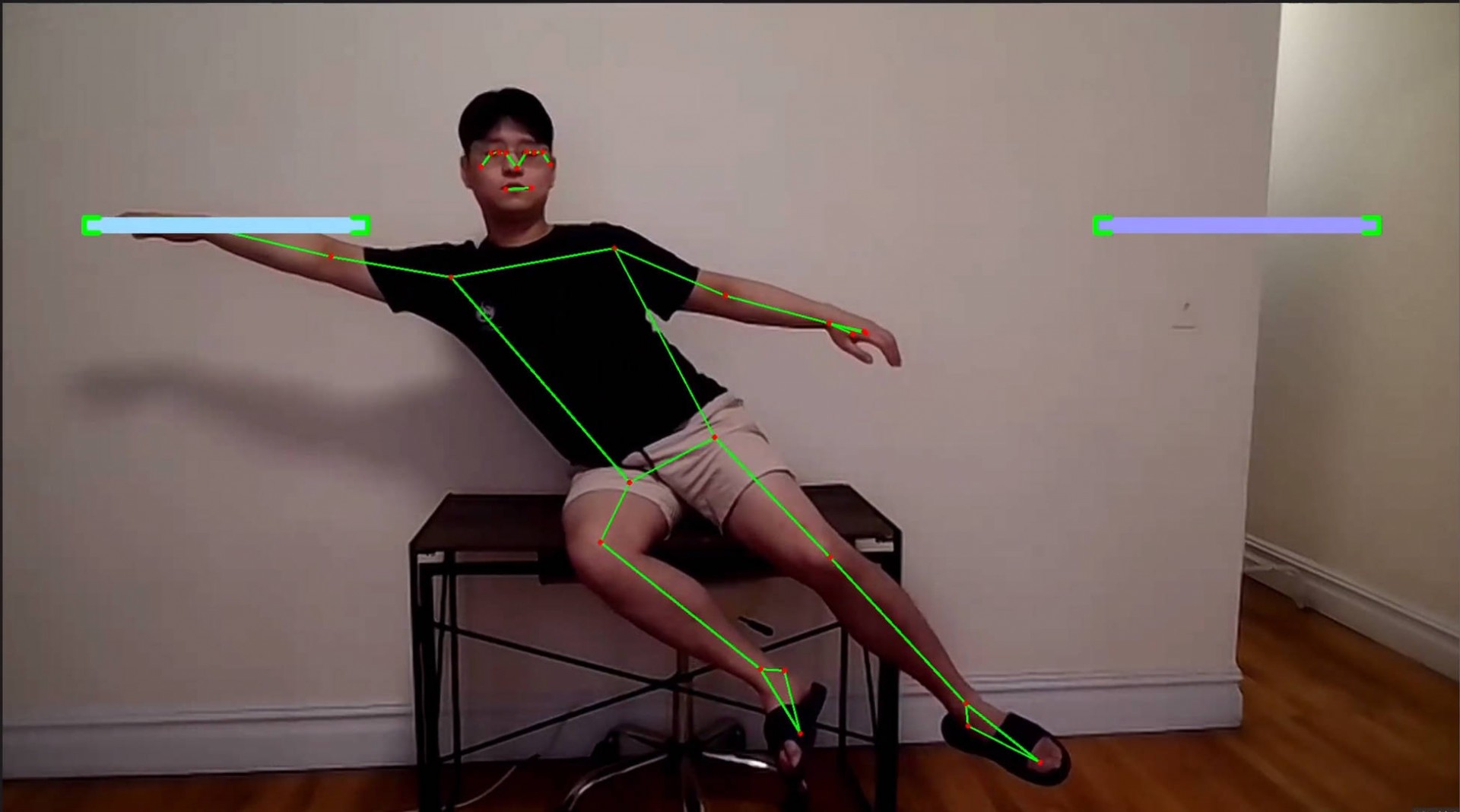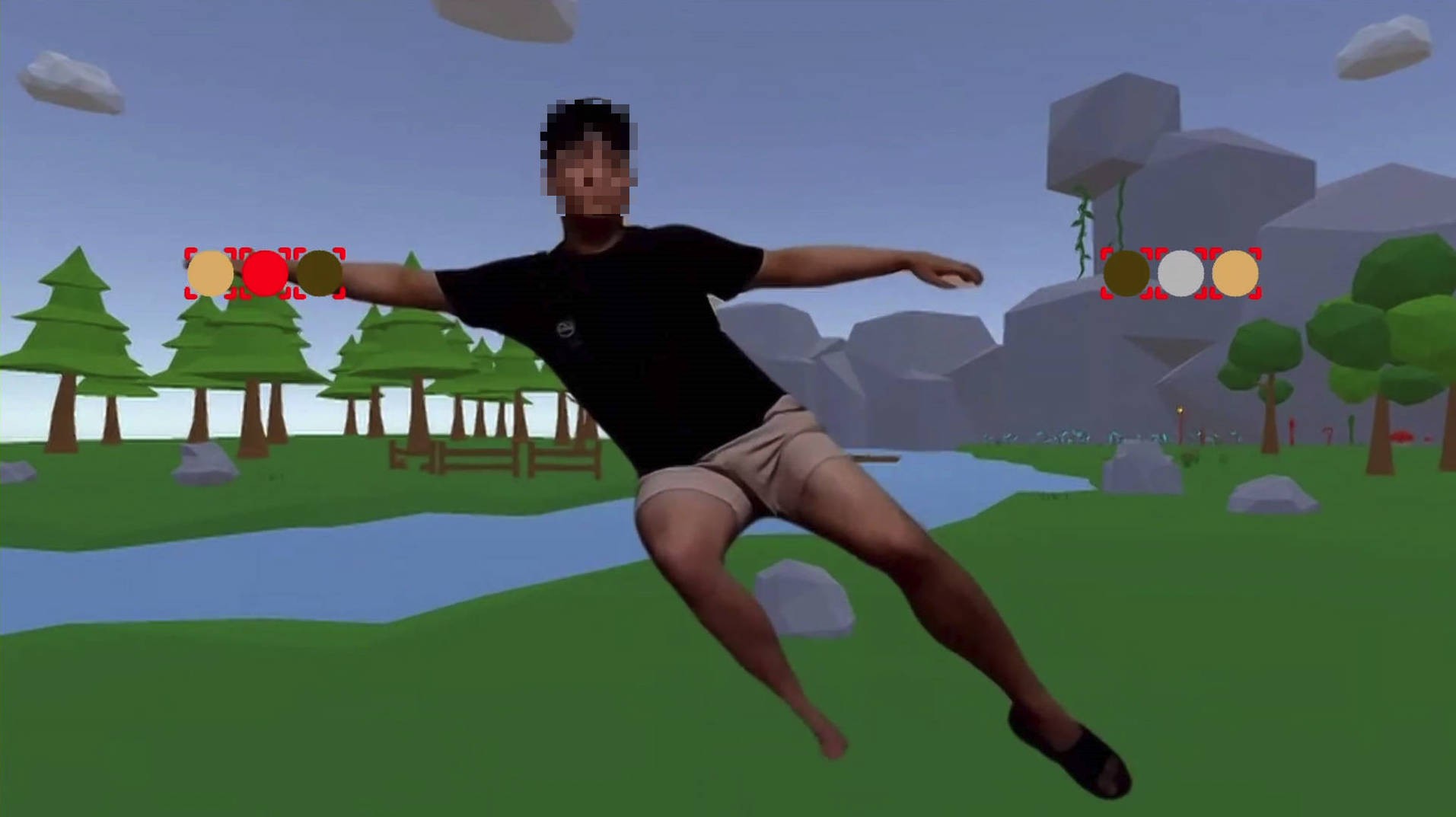- Trunk Support Trainer (TruST) is a cable-driven robot where a thoracic belt is pulled by wires by actuators mounted on a fixed frame. The wires are controlled to apply a force field on the upper body in response to the body’s motion. The wires provide assist-as-needed forces for rehabilitation, training, and strengthening of the upper body.
- Dynamic boundary based TruST intervention: We introduced deep learning into TruST's real-time controller design. We collected 4320 trials of 3D trunk movement data (about 1.5 million data frames) during the postural star sitting test from 45 healthy subjects in two conditions (with or without foot support). It might be helpful in other seated postural control researches. The dataset is available to the research community upon request consistent with the IRB guidelines, please contact with Xupeng Ai ([email protected]).
- Extended Reality (XR) enhanced TruST intervention: We developed a custom XR application that can enhance the TruST-assisted postural training effects. Our application involved randomized reach directions and clear functional reach targets with hierarchical difficulty levels. When the subject successfully reached a target, the virtual coin rotated to provide positive feedback. This application is available with the research community following the IRB guidelines, please contact with Xupeng Ai ([email protected]) for access to the Unity project.
- Remote XR intervention: We developed a remote XR rehabilitation system with marker-less motion tracking for sitting posture training. Forty-two healthy subjects participated in usability testing. Each subject completed 24 rounds of multi-directional reach tasks using the system and 24 rounds without the system. Motion data were collected via Zoom meetings using built-in cameras in low-cost devices. This application is available with the research community following the IRB guidelines, please contact with Xupeng Ai ([email protected]) for access to the codes.

